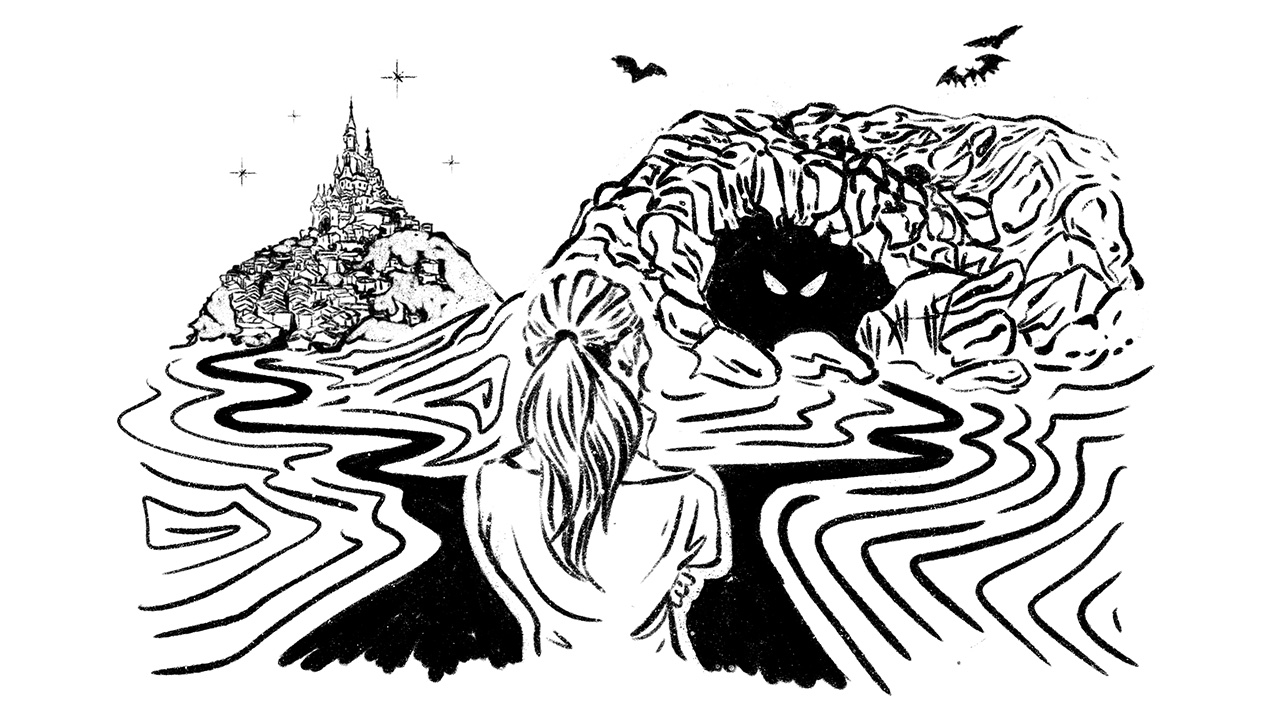Using Evocative Moments to Promote Pathfinding in Video Games
“I think surprise, mystery, and wonder is an underserved asset in the gaming space right now.” – Day9 after encountering Siofra River in Elden Ring
Over the last year, I’ve been getting into bird photography. I know, bear with, this will relate to pathfinding in video games! I’ve been reading books, researching websites, subscribing to every YouTube channel I can to find the best spots for bird photography. Then, one day, I was driving and spotted a place to pull in beside a small country lane. Overcome with curiosity, I decided to pull over, took my camera out, and waited. I was greeted by quite a few species I haven’t had a chance to photograph. It’s amusing that the best spots to find birds, for me at least, haven’t come from books and experts and more so from curiosity and happenstance. Video games, single player role playing games do a particularly good job at this, apply the same principles: supply the player with something that piques their interest and they’ll be unable to resist exploring. Who needs a map or GPS when we have endorphins guiding us? There are three main kinds of moments that encourage pathfinding: surprise, mystery and wonder.

Surprise
When I started playing Elden Ring by FromSoftware, I didn’t realise that the map was a feature that’s never been implemented in previous Souls games. This got me thinking, how the heck did people know where they were going? And there’s no mini-map or waypoints for quests! As I embarked on my journey as a Tarnished (the title of the character you play), I found that I knew I had reached somewhere new when I encountered unlooted items and new enemies. This is a phenomenon that I’ve encountered before. I knew where to go because I was constantly discovering new locations, NPCs, and enemies. It works the same way for CD Projekt Red’s Witcher series and Cyberpunk2077. Rockstar Games implements this masterfully by integrating random encounters into the world, using dialogue and visual quest to hint to the player opportunity. Finally, games like theHunter: Call of the Wild, use tracking animal’s calls and footprints as a way to promote game immersion and help players navigate through the world.
Mystery
During your daily life, how often do you tap into your curiosity? When you do let curiosity take over, how far does it take you? How do you feel in the moment? For me, it’s a sense of exhilaration. I’ve found something that I can’t quite figure out and just need to keep digging until I’ve come to a satisfying conclusion. There are a few games who harness this need to satiate one’s curiosity as a tool for pathfinding. Game studios encourage their players to explore their worlds by utilising interactable objects, characters, and hidden locations. When you find a seemingly random note in a drawer in Pathfinder: Wrath of the Righteous, if you show it to the right character, it can kick off an entire saga of quests and previously hidden locations. These moments draw the player in and make for unmissable and immersive gameplay.
Wonder
My first memorable moment of experiencing true wonder was when I was 14 years old. I was riding the Inca Rail to the top of Machu Picchu in Peru. It was the first time I’d left the US, which just heightened my overall excitement. Once I reached the top, I just couldn’t stop staring out into the vastness of the agriculture steppes, ruins, and surrounding forest. It evoked a sense of wonder that fuelled a need to explore and wander. Game developers often use wonder to encourage their players to explore and progress through games. I’ll use Elden Ring again as an example. Can you tell I really liked this game? When I lifted the large metal door to Limgrave and saw endless golden trees, mountains, and ruins, that sense of wonder was almost overwhelming. I was itching to explore the world in its entirety. When I encountered my first Walking Mausoleum, a literal mausoleum with four gargantuan moss covered stone legs, I was speechless. I just had to keep searching for new monsters, areas, and challenges.
You’ve found the exit! Now what?
Every path has an end, unless I guess procedurally generated ones. But this one was created by humans and we have other topics we need to write about, games to play, and cookies to eat. I hope you’ve learned at least one new thing about implementing pathfinding in games. If you only take one learning away from this, it’s that there’s no perfect way to guide your players through your game. Don’t be afraid to try new things and test them out on your players. If you have any questions, want to have a chat about UX research and games, or ask what my favourite chocolate chip cookie recipe is, feel free to get in touch.
Thank you to my colleague Claire Vergnes for the amazing artwork that accompanies this post.
This is the fourth post in a series on Pathfinding in Video Games, click through for related posts: Documenting the Progression of Pathfinding in Video Games, How Do We Know Where We’re Going? Pathfinding In Real Life, and How Video Games Adapted Real Life Pathfinding Tools.
